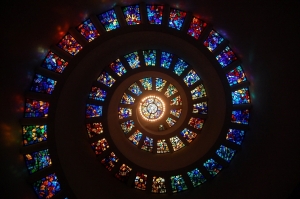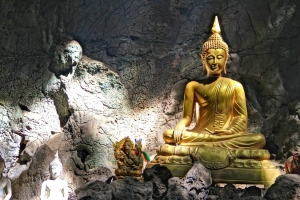Delighted to share with you this article (with permission and gratitude) on chakras by my dear friend, the author Alok Jain. He writes with deep knowledge and passion for Ayurveda and the Vedic Sciences and his book The Root Cause: Ayurveda, Astrology and Beyond for a Blissful Life is a gift to the student of Ayurveda as well as advanced practitioners of Ayurveda.
WHAT ARE CHAKRAS, WHAT AILS HEART CHAKRA, THE EFFECTS OF IMBALANCED HEART CHAKRA AND HOW TO KEEP IT HEALTHY
Chakra balancing has become the IN thing in today’s world. So what are chakras? They are those points running all along the spine in the core of our body which house the most essential organs/glands. And since it is the blood circulation that decides the health of any organ (and that’s why chakra), if we keep this fact in mind we can learn to keep our chakras in balance. There are several simple methods that need to be combined to keep our chakras healthy which include right food, yogasana, pranayama, respecting the sun-cycle, focussing on chakras and Beej mantra.
Beej mantras are sound syllables which when recited create vibration in a specific chakra thereby increasing blood flow in a particular fashion and removing toxins from there. Here is an example of Heart chakra which will give you enough food for thought on how to keep chakras working optimally. Let’s begin..
In today’s world when stress and competition levels are going higher and higher due to the collective conscience, it is the heart chakra which gets impacted the most. This is because high stress and associated issues like peer pressure, rat race, excessive competition, showdown business, inflated ego and jealousy result in ever increasing expectations, chronic diseases, greed, failed relationships, untimely deaths etc. And once this happens, the reduced laughter and cheerfulness of the person leads to closure of this chakra – literally like a closed fist.
This closure leads to sluggish pumping of the heart, leading to weaker blood circulation reaching the peripherals. So, when less blood reaches the brain, it pushes the person into brain diseases like anxiety, depression, OCD, over eating, insomnia and when less of it reaches the lower body it may lead to poor digestion, assimilation, elimination etc.
This is the reason that recitation of “SOHUM” (“SO” while inhaling and “HUM” while exhaling) works very well to activate a poorly working heart by contracting and expanding it. SOHUM works like a BEEJ mantra for throat and heart chakra (though the heart chakras Beej mantra is YAM and HUM or HAM is for the throat; this syllable works to activate both the chakras). And that’s why it is an essential part of the Art of Living course, and many people who practice it initially will find all their stuck up emotions flowing out and vanishing.
So, while from a biology perspective, it improves radial blood circulation like an opening fist and removes long stuck toxins, on an emotional/physical front, it unwinds the wiring of the brain thereby undoing depression, anxiety, insomnia, sinusitis, indigestion etc. And therefore it should be practiced on a regular basis, especially in today’s times.
Please remember that since HUM activates throat chakra too, being the Beej mantra of throat, it is good for those having a sluggish thyroid but should be performed lightly by those having hyperthyroid. Since the thyroid’s activity is governed by the pituitary gland, one may need to activate crown chakra with AUM as Beej mantra to remove sluggishness.
Also, remember that even indiscreet use of medicines like beta blockers used for controlling BP, close one’s heart chakra and their widespread use is becoming the reason for increased health issues associated with closed heart chakra. In fact even indiscreet use of Arjuna bark used in Ayurveda has a similar effect. Yes, they work as medicines for widening blood vessels of the heart if only the heart is weak, but they should not be used as generic drugs for controlling blood pressure and should not be used for long.
Last but not the least, every chakra is equally important and should be working not only optimally (neither overactive nor less active) but should also be in sync with other chakras of the body. So an overactive heart chakra may create palpitations and hyperactivity due to excessively fast circulation or even uncontrolled energy.
In the cave of your heart, find love
Cpt. Alok Jain is an author, graduate of Biology, a former Captain of the Indian Army; Commissioned Officer in the Corps of Air Defence, and has vast first-hand experience and knowledge of the wonderful benefits of the Vedic Sciences including Ayurveda, Yoga and Astrology.
Alok also discusses the chakras in his book The Root Cause: Ayurveda, Astrology and Beyond for a Blissful Life
Picture credits: Chakra diagram – Alok Jain. Other pics – Pixaby



